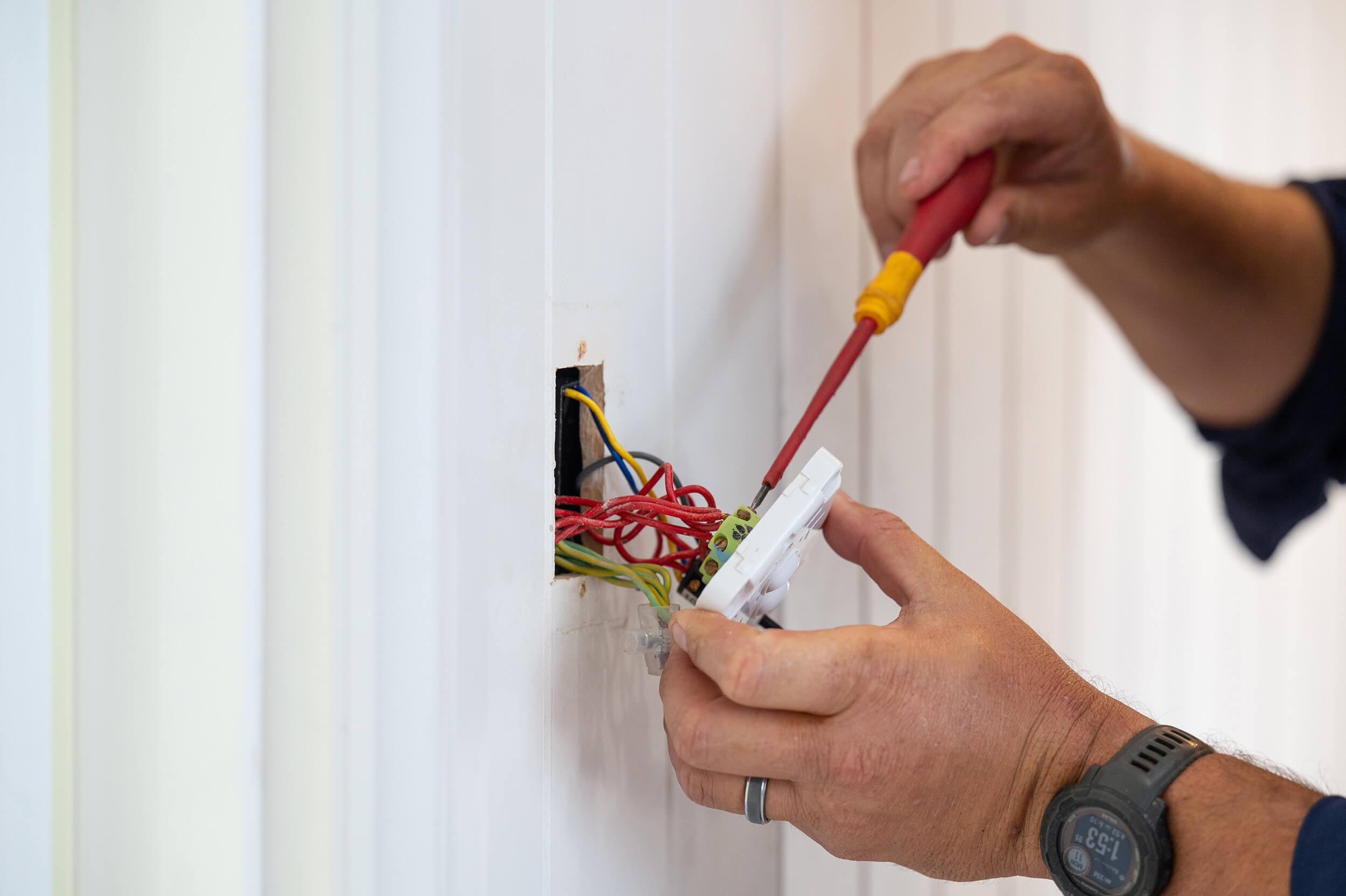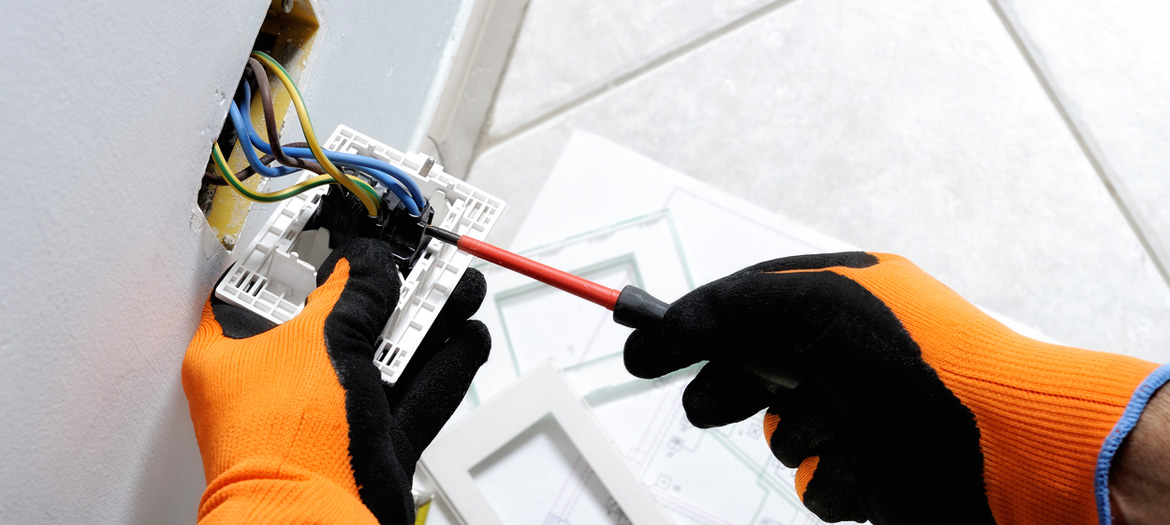Common Electric Issues Every Property Owner Need To Know About
Property owners frequently run into numerous electric troubles that can affect safety and security and functionality. Concerns like flickering lights and tripped breaker are more usual than lots of recognize. These scenarios can show deeper electric issues that warrant attention. Recognizing the dangers and indicators related to obsolete electrical wiring and dead electrical outlets is necessary. What measures can be taken to protect against these problems? Checking out these usual electric problems can reveal essential understandings for maintaining a safe home atmosphere.

Flickering Lights: Causes and Solutions
Why do some house owners experience flickering lights? Flickering lights can be an usual annoyance, usually suggesting underlying electrical issues. One main reason is faulty or loose links within lights or circuitry, which can bring about intermittent power supply. Additionally, using high-wattage appliances on the same circuit may trigger voltage variations, resulting in dimming or flickering. Another possible problem is an overloaded circuit, where way too many tools draw power concurrently, stressing the electrical system. Obsolete or abject circuitry can contribute to irregular electric flow. In many cases, flickering lights might indicate a trouble with the home's electric panel or service line. Home owners ought to address flickering lights immediately to prevent prospective dangers. Solutions may include tightening links, redistributing appliance tons, or seeking advice from an accredited electrician for a thorough analysis. Determining the origin reason can assist guarantee a steady and secure electrical system in the home.
Tripped Circuit Breakers: What You Need to Know
Have house owners ever questioned what triggers their circuit breakers to journey suddenly? This common concern usually emerges from an overload of electric circuits, where a lot of tools attract power all at once. In such situations, the circuit breaker functions as a security device, interrupting the circulation of electricity to prevent getting too hot and potential threats. Another constant cause is a short circuit, which happens when a real-time wire contacts a neutral cable, developing a surge of electricity that journeys the breaker. Ground mistakes can also lead to stumbled breakers; these take place when a real-time cable touches the ground or a grounded surface, presenting serious safety and security risks. House owners should regularly evaluate their use of high-wattage appliances to stay clear of straining circuits. In addition, recognizing the function of breaker can assist them respond properly throughout a trip, ensuring their home stays properly maintained and secure.
Outdated Electrical Wiring: Threats and indicators
Out-of-date wiring can present substantial threats to homeowners, usually going unnoticed till problems occur. Residences constructed prior to the 1980s might still have aluminum electrical wiring or knob-and-tube systems, which are no much longer thought about risk-free. Indications of obsolete electrical wiring include flickering lights, frequently stumbled breaker, or burning smells near electrical outlets. These signs might recommend that the electric system is overloaded or deteriorating.Additionally, house owners may observe burn marks around switches or electrical outlets, which can indicate overheating. The threat of electrical fires substantially increases with outdated circuitry, as these systems were not created to take care of modern-day electric lots. Homeowners are motivated to have their electrical wiring examined on a regular basis, especially when restoring or adding brand-new appliances. By identifying these indicators early, they can stay clear of harmful scenarios and maintain a much safer living atmosphere. Updating to current electric requirements is an aggressive action in keeping home safety and efficiency.
Regularly Blown Fuses: Troubleshooting Tips
Constant blown integrates can suggest underlying electric issues that might come from obsolete electrical wiring or overloaded circuits. Homeowners experiencing this trouble should initially identify the devices linked to the impacted circuit. It is advisable to prevent utilizing numerous high-wattage gadgets at the same time, as this can lead to circuit overload. If the issue lingers, examining the fuse box for signs of wear or damage is important; a faulty circuit box might call for replacement.Additionally, inspecting for loose links within the circuit can aid avoid future occurrences. Home owners ought to also validate that the fuses being utilized are of the right amperage, as using a wrong fuse can exacerbate the trouble. If these troubleshooting suggestions do not resolve the issue, speaking with a certified electrical expert is recommended to examine the electrical system better. Attending to these worries without delay can assist reduce risks and assure the safety and security of the home's electrical infrastructure.
Dead Electrical Outlets: Usual Reasons and Repairs
When a house owner experiences a dead outlet, it can often give disappointment and complication. Several common reasons might lead to this concern. One regular culprit is a stumbled circuit breaker, which can be conveniently reset. Homeowners must examine their electric panel to inspect if any breakers are in the off placement. An additional opportunity is a damaged outlet itself, which might need substitute. Furthermore, loose wiring links within the electrical outlet can disrupt power flow, making examination essential.Sometimes, the problem might originate from an overloaded circuit, particularly when numerous gadgets are attached. In such instances, rearranging the electric tons can fix the problem. Property owners should likewise think about the age of their circuitry; older systems may need updates to meet modern electric needs. If these steps do not correct the circumstance, speaking with an accredited electrician is recommended to assure security and appropriate diagnosis.
Electric Shocks: When to Be Worried
How can property owners establish whether an electrical shock warrants concern? Home owners must initially assess the seriousness and context of the shock. A light static shock, commonly felt when touching metal things, is commonly safe and common. If the shock occurs while communicating with a plugged-in device or electrical outlet, it might suggest an extra Visit Your URL significant issue.The place and frequency of the shocks are important. Repetitive shocks from the exact same source, especially in wet locations like cooking areas or restrooms, could indicate defective circuitry or insufficient grounding. Property owners need to also consider the experience of the shock; a shock that causes pain or muscular tissue tightenings is much more worrying than a mere tingle.If there's any uncertainty, it is suggested to seek advice from a certified electrician. Overlooking prospective electrical threats can lead to major safety and security risks, including fire or extreme injury.
Overloaded Circuits: Avoidance and Precaution
Overloaded circuits posture considerable dangers in residential settings, typically resulting in electrical fires or devices damages (ASP Level 2 Electrician). Homeowners need to acknowledge the indications of an overloaded circuit, such as regularly tripped breakers or dimming lights. Implementing precautionary security practices can aid minimize these threats and guarantee a safer living environment
Acknowledging Overloaded Circuits
What indications indicate that a circuit may be strained? Property owners ought to be vigilant for a number of essential indicators. Regularly tripped breaker or blown integrates recommend extreme tons on the circuit. Dimming or flickering lights, especially when various other home appliances remain in usage, can signify an inadequate power supply. Furthermore, electrical outlets or switches that really feel cozy to the touch might indicate overheating, a potential fire threat. Unusual humming audios from electrical outlets also warrant interest, as they can signify electric problems. Lastly, if appliances operate inefficiently or fail to start, it may suggest an overloaded circuit. Identifying these signs early can assist protect against severe electric issues and promote a much safer home environment.
Preventive Safety Practices
To preserve a risk-free and efficient electrical system, property owners need to implement preventative safety methods that attend to prospective circuit overloads. One reliable procedure is to avoid attaching way too many gadgets to a single outlet, as this can exceed the circuit's capability. Making use of power strips with integrated circuit breakers can help distribute power safely. House owners should likewise routinely inspect cables and devices for damages and change any type of malfunctioning equipment immediately. It is important to ensure that breaker are functioning properly and to be familiar with the complete power level being made use of in each circuit. Additionally, getting in touch with a licensed electrical expert for regular inspections can determine potential issues prior to they escalate, ensuring a more secure living atmosphere and prolonging the lifespan of electrical systems.
Frequently Asked Inquiries
How Frequently Should I Have My Electric System Inspected?
Normal examinations of electrical systems are advised every three to five years. Home owners must think about more constant checks if they experience issues, embark on improvements, or live in older residential properties to ensure safety and security and conformity.
Can I Take Care Of Electrical Problems Myself or Work With an Expert?

What Are the Signs of an Electrical Fire Risk?
Signs of an electric fire webpage danger consist of frequently tripped circuit breakers, flickering lights, shedding smells, blemished electrical outlets, or cozy, humming cables. House owners ought to continue to be cautious and look for specialist aid if any one of these indications exist.
Just how Do I Know if My Home Requirements an Electrical Upgrade?
To figure out if a home needs an electrical upgrade, indications include constant circuit breaker trips, out-of-date circuitry, inadequate electrical outlets, flickering lights, and the existence of older electrical panels, showing possible security hazards and inadequacy.
Are There Particular Security Tips for DIY Electrical Work?
When considering do it yourself electrical job, one should always switch off power, make use of shielded devices, confirm circuit capability, comply with regional codes, and speak with professionals for complex jobs to guarantee safety and security and avoid accidents. Another prospective issue is an overloaded circuit, where too lots of tools attract power all at once, straining the electrical system. The danger of electric fires considerably increases with out-of-date circuitry, as these systems were not developed to handle modern electric lots. Regular blown merges can indicate underlying electric issues that may stem from outdated electrical wiring or overloaded circuits. To keep a safe and efficient electrical system, house owners must carry out precautionary safety and security methods that attend to prospective circuit overloads. Level 2 Electrician. Indications of an electric fire threat consist of frequently stumbled circuit breakers, flickering lights, shedding smells, discolored electrical outlets, or cozy, buzzing cords